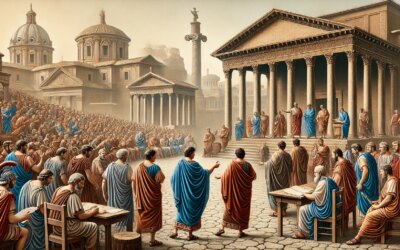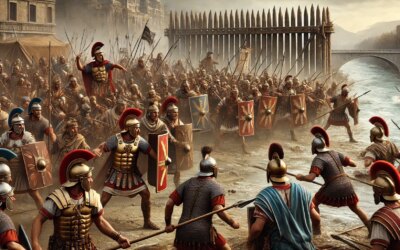Introduction: A Turning Point in the Early Republic
In 396 BCE, the young Roman Republic faced a fierce adversary in the Etruscan city of Veii, located less than 16 kilometers north of Rome. After a decade-long struggle, Rome finally seized Veii under the command of Marcus Furius Camillus. This triumph marked the Republic’s first major conquest, setting Rome on a path of expansion across the Italian peninsula.
Origins of the Conflict
The rivalry between Rome and Veii dated back to the 5th century BCE, as both powers vied for control over the fertile territories of southern Etruria. Commercial competition and territorial disputes led to intermittent skirmishes. By the late 5th century, Rome’s increasing population and growing military capabilities emboldened the Republic to challenge Veii’s dominance.
The Prolonged Siege
The siege began around 405 BCE, making it one of the longest in ancient history. Initial Roman assaults against Veii’s formidable walls failed to breach the city. Recognizing the stalemate, the Roman Senate appointed Marcus Furius Camillus as dictator in 398 BCE—granting him supreme authority—and charged him with breaking Veii’s defenses.
Camillus’ Strategy
Camillus employed a multi-pronged approach: he established a blockade to cut off Veii’s supplies, fortified Roman camps around the city, and dug tunnels beneath its walls. Ancient sources, including Livy, describe how Roman engineers extended subterranean passages to undermine the fortifications—an early example of siegecraft ingenuity.
The Final Assault
In the summer of 396 BCE, after months of digging and skirmishing, Roman forces discovered a weak point beneath the city’s eastern walls. Under cover of night, a detachment of Roman soldiers infiltrated Veii through the tunnels, opened the gates, and admitted the main army. The sudden attack overwhelmed the Etruscan defenders, leading to fierce close-quarters combat in the streets.
Aftermath and Significance
The fall of Veii had profound repercussions. Rome gained immense wealth through plunder, conquered fertile lands for colonization, and absorbed Etruscan artisans and craftsmen into its society. Politically, the victory solidified Camillus’ reputation as Rome’s second founder and demonstrated the effectiveness of the dictatorship in military emergencies.
Long-Term Impact
With Veii subdued, Rome faced fewer Etruscan threats and could focus on expanding southward toward Latium and Campania. The methods pioneered at Veii—combined arms tactics, engineering expertise, and strategic leadership—became hallmarks of Roman warfare. In later centuries, Rome would replicate these siege techniques across its growing empire.
Legacy of Camillus
Marcus Furius Camillus became a legendary figure. Celebrated in Roman annals as the “Second Founder of Rome,” he was granted the highest honors, including a triumph and public thanksgiving festivals. His success at Veii established the model of Roman military and civic leadership that would endure throughout the Republic and into the Empire.
Conclusion: Foundations of Empire
The Siege of Veii stands as a milestone in Roman history. It proved that Rome, once a regional power, could conquer its neighbors through discipline, innovation, and determined leadership. The capture of Veii not only expanded Rome’s territory but also laid the groundwork for an empire that would span continents and centuries.




